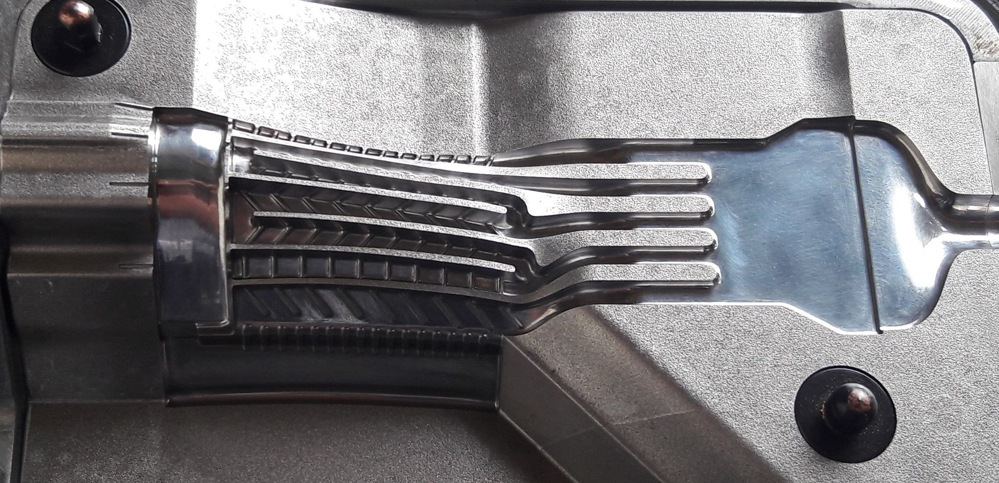Core competence gets additive

Modern gas turbine blades rely on intricate internal air cooling passageways to keep them from melting during service. With support from NATEP, Gardner Blade has turned to additive layer manufacture to improve the way these passageways are created. Aerospace Manufacturing reports.
As aerospace gas turbine inlet temperatures continue to rise in the quest for more thrust and greater efficiency, the cooling of turbine blades to prevent them melting presents a major challenge to both designers and manufacturers. The internal passageways and cavities within the blade which allow cooling air to circulate become ever more complex and dimensionally critical, leading to blade wall thicknesses of as little as 0.5mm. Whilst engine manufacturers specify exacting finished blade tolerances, consideration of the many manufacturing steps necessary to make the blade results in process control tolerances which are definitely not for the faint-hearted.
Turbine blades are usually manufactured by investment (or lost wax) casting, a method first developed at least 5,000 years ago, but which now represents one of the most complex processes in the manufacture of engines. It begins with a ceramic core in the shape of the internal features of the blade, which is produced by injecting under pressure a hot silica or alumina-based slurry into a metal die block sandwich. The die block pairs are traditionally machined in tool steel by an electro-discharge process using extremely high-tolerance-and-finish electrodes in the ‘male’ shape of the internal features.

Manufacture of the ceramic cores can present problems because the narrow and convoluted ‘fingers’ of material resembling comb teeth are prone to fracture due to thermal stresses arising during cooling of the ceramic. One way around this would be to introduce enhanced thermal control of the die during moulding using a network of cooling channels within the die block halves so that the rate and uniformity of cooling the ceramic could be adjusted and controlled. Unfortunately, using traditional machine tools, the options for introducing such channels are limited by ‘line of sight’ operations, principally drilling and milling.
Getting more from the core
Now, in an 18-month NATEP project led by Worcestershire-based Gardner BTC, manufacture of core die blocks using the selective laser melting additive layer process has been successfully trialled. Together with 3D printing partner, Material Solutions, and ceramic core manufacturer Invest Tech, Gardner has redesigned the ceramic core manufacturing dies to introduce optimised thermal control within the die block during moulding. The cooling channels were designed and positioned with the aid of computer thermal analyses to give greater control over the injection/cooling process and minimise residual stresses in the injected core. Additive layer manufacture allows the channels to take any shape and follow any contour, leading to ‘organic’ structures which could only be made by this method.

Gardner’s project manager, Keith Fulford, comments: “By using AM, it has been possible to make dies with far more complicated internal pathways than have previously been achieved through conventional machining, and this has given our designers a new degree of freedom to explore. Thanks to NATEP, our customer Invest Tech has much greater potential for controlling process parameters to drive improvements in yield as a result of better thermal control within the dies.”
Material Solutions manufactured the test die blocks in powdered maraging tool steel which has been optimised especially for processing by laser melting. This steel has very good mechanical properties and is easily heat-treatable using a simple thermal age-hardening process to obtain excellent hardness and strength.
When it all adds up
Trevor Illston of Material Solutions comments: “Materials Solutions was very pleased to participate in the NATEP funded project, and support companies to explore the potential benefits from using additive manufacturing. NATEP made it possible for us to work alongside Gardner Aerospace in developing a new and exciting tooling application utilising the unique benefits of additive manufacturing. Materials Solutions has focused on metal additive manufacturing and developing new applications using the technology, with 15 machines currently running across a range of materials and applications.”

“This work shows that AM does not always have to compete on piece cost terms. The design freedom which it offers means that, for highly complex parts where functionality is key, it is necessary to consider far more sophisticated cost models which look at through-life cost of ownership. The benefits derived from using AM will be seen not only by Gardner, but by its customer, Invest Tech.”
For Gardner, which has over 30 years of experience in gas turbine blade tooling manufacture, additive manufacturing is now another key competence to enhance its core business.












